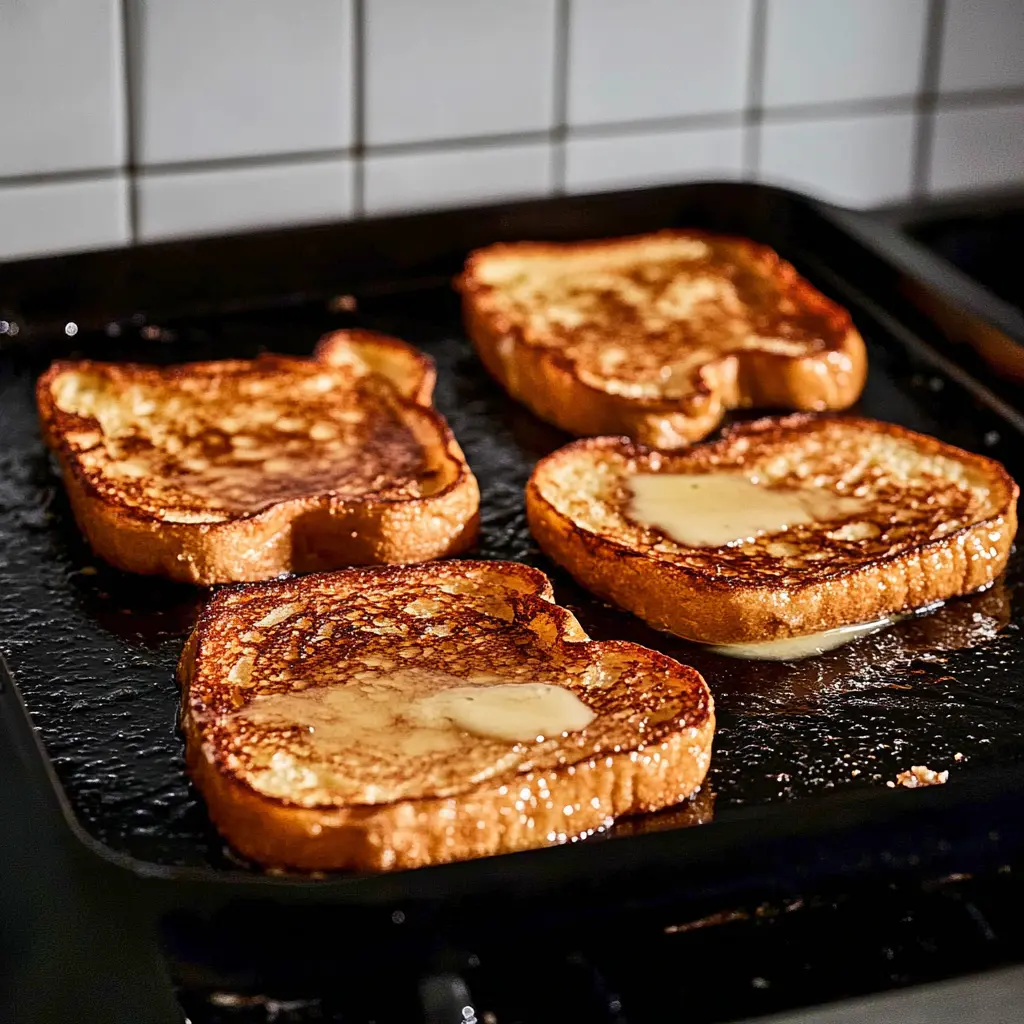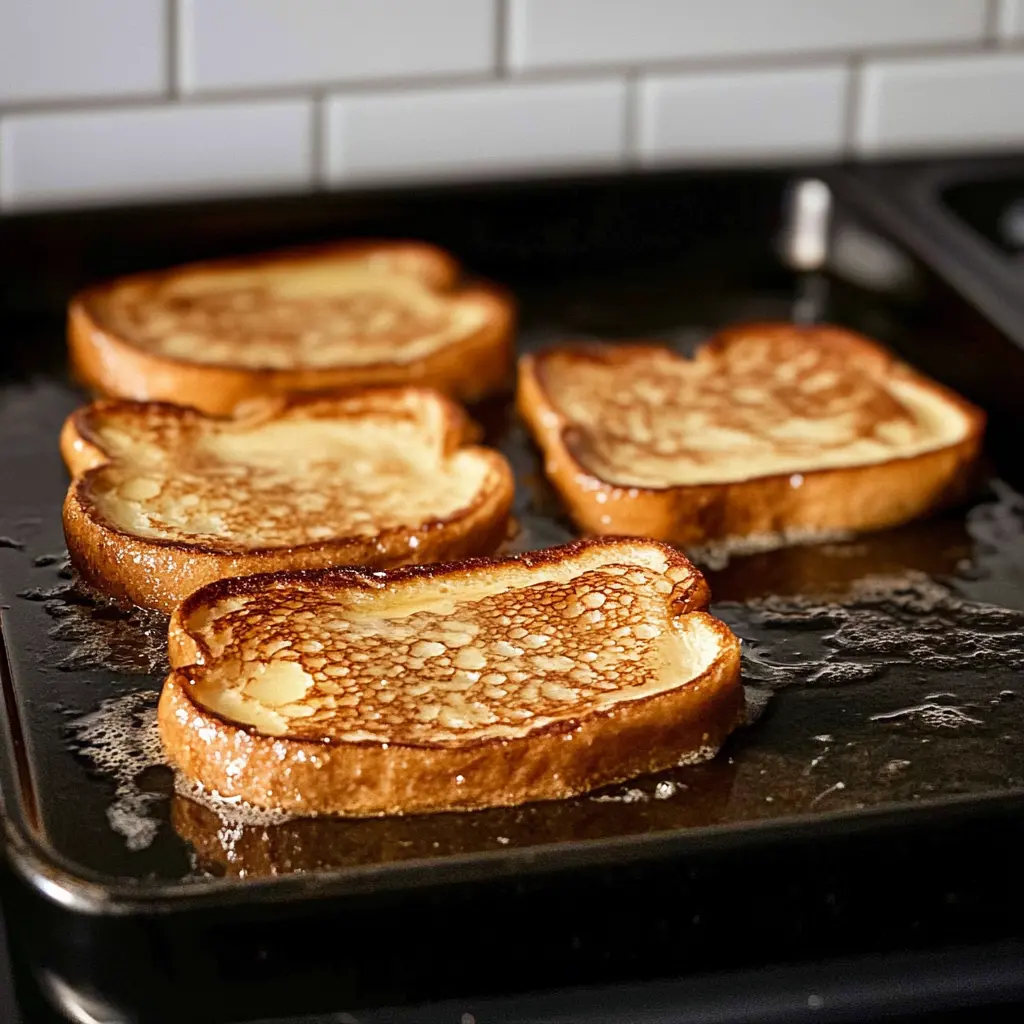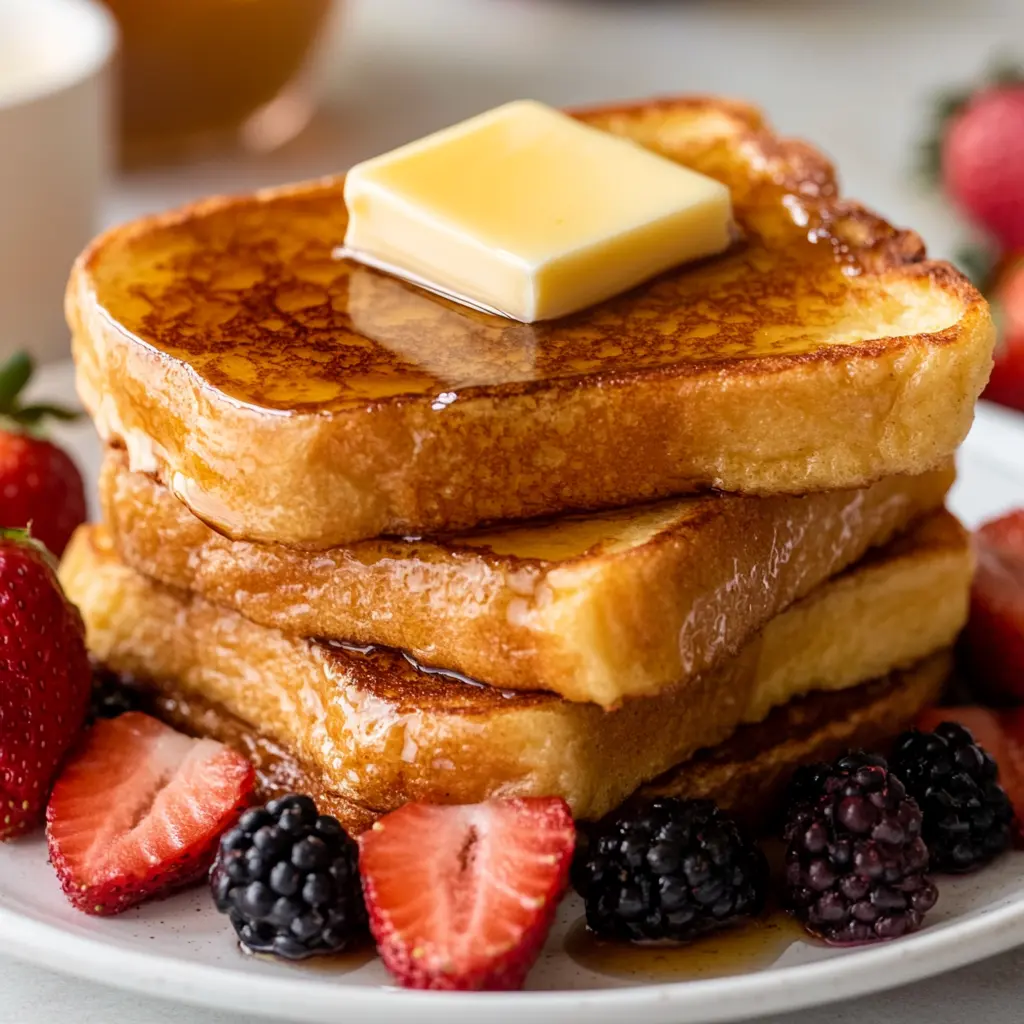Introduction to Why is French toast so high in calories
French toast is a beloved breakfast classic enjoyed by many around the world. Known for its rich, custardy texture and sweet, satisfying flavor, it often appears on weekend brunch menus and special breakfast tables. However, one common question that arises is: Why is French toast so high in calories?
Understanding the factors that contribute to its caloric content can help you make informed choices and enjoy this treat in moderation. In this article, we’ll explore the ingredients, cooking methods, and modifications that affect the caloric content of French toast. We’ll also provide tips on how to make healthier versions without sacrificing flavor. By the end, you’ll have a clear understanding of why French toast can be calorie-dense and how to enjoy it as part of a balanced diet.
Ingredients and Their Caloric Impact
Bread Choices and Their Caloric Impact
Types of Bread Used
The type of bread used in French toast significantly affects its caloric content. Common options include white bread, whole grain bread, and brioche.
- White Bread: This is a popular choice due to its soft texture and mild flavor. A typical slice of white bread contains around 70-80 calories.
- Whole Grain Bread: This is a healthier option, offering more fiber and nutrients. However, it has slightly more calories, with about 80-90 calories per slice.
- Brioche: Known for its rich, buttery texture, brioche is a luxurious choice. It is also the most calorie-dense, with each slice containing about 120-150 calories.
Caloric Differences Between Bread Types
The caloric differences between these types of bread arise from their ingredients. White bread is made from refined flour, while whole grain bread includes whole grains, providing more fiber and nutrients but also slightly more calories. Brioche includes butter and eggs, adding to its rich flavor and higher calorie count.
For more on how different ingredients impact nutritional content, you can explore our guide on Best Cheeses for Mac and Cheese: What 2 Cheeses Are Best.
Eggs and Dairy Products
Role of Eggs in French Toast
Eggs are a crucial component of French toast, contributing to its custardy texture and rich flavor. They also add significant nutritional value, including protein and healthy fats. Each large egg contributes about 70-80 calories.
Use of Milk, Cream, and Alternatives
The liquid used to make the French toast batter also plays a significant role in its caloric content.
- Milk: Whole milk adds around 150 calories per cup, while skim milk adds about 90 calories per cup.
- Cream: Heavy cream is much higher in calories, with about 400 calories per cup.
- Milk Alternatives: Unsweetened almond milk and soy milk are lower-calorie options, with around 30-80 calories per cup.
Caloric Contribution of These Ingredients
Combining eggs with milk or cream forms the batter that gives French toast its characteristic richness. Using cream or whole milk results in a higher calorie count, while opting for skim milk or milk alternatives can reduce the overall calories without sacrificing too much flavor.
For a deeper dive into the impact of dairy ingredients on recipes, check out our Cream Cheese and Mac and Cheese: Ultimate Guide.
Sweeteners and Toppings
Common Sweeteners and Their Caloric Content
Sweeteners significantly add to the caloric content of French toast. Common choices include sugar, syrup, and honey.
- Sugar: One tablespoon of sugar contains about 49 calories.
- Syrup: Maple syrup is popular, adding about 52 calories per tablespoon.
- Honey: Honey adds about 64 calories per tablespoon.
Popular Toppings and Their Impact on Calories
Toppings can transform French toast from a simple dish into an indulgent treat, but they also add extra calories.
- Butter: One tablespoon of butter adds about 100 calories.
- Fruit: Fresh fruit toppings, such as berries or banana slices, are lower in calories and add vitamins and fiber. A half-cup of mixed berries adds about 30 calories.
- Whipped Cream: A dollop of whipped cream can add around 50 calories.
Understanding these additions helps manage the total calorie intake of your French toast meal.
For more ideas on how to enhance your dishes with toppings, see our article on Toppings for Mac and Cheese: Can You Put On Mac and Cheese?.
Cooking Methods and Their Effects
Cooking Methods and Oil Usage
Different Cooking Methods
The way you cook French toast can greatly influence its calorie content. The two most common methods are frying and baking.
- Frying: This is the traditional method. It involves cooking the soaked bread slices in a skillet with butter or oil. While it provides a crispy, rich texture, frying significantly increases the calorie count due to the added fats.
- Baking: Baking is a less common but healthier method. You can arrange the soaked bread slices on a baking sheet and bake them in the oven. This method uses less oil or butter, reducing the overall calorie content. Baked French toast can still be delicious, especially when cooked until golden and slightly crispy.
Type and Amount of Oil or Butter Used in Cooking
The type of fat used in cooking French toast also affects its caloric content:
- Butter: Adds a rich flavor but also adds about 100 calories per tablespoon. Many recipes call for several tablespoons.
- Vegetable Oil: Commonly used as a frying medium, adding about 120 calories per tablespoon. It lacks the flavor of butter but is often preferred for its higher smoke point.
- Olive Oil: A healthier option that adds about 120 calories per tablespoon. It offers a unique flavor that can complement savory French toast variations.
Impact on Overall Caloric Content
Frying French toast in butter or oil can add a substantial amount of calories. For example, if you use 2 tablespoons of butter to fry a serving of French toast, you’re adding 200 extra calories. Baking, on the other hand, typically requires less fat. You might lightly grease a baking sheet or use a non-stick spray, adding minimal extra calories.
Reducing the amount of oil or butter used, or opting for healthier fats like olive oil, can help lower the calorie content while still delivering a tasty dish. Additionally, baking French toast can be an effective way to enjoy this classic breakfast with fewer calories.
For more tips on maintaining the perfect texture while reducing calories, check out our How to Keep Mac and Cheese Creamy: Ultimate Guide.
Part 4: Healthier Alternatives and Modifications
Healthier Ingredient Substitutions
Making French toast healthier involves thoughtful ingredient substitutions that lower the caloric content while maintaining flavor and texture.
Using Whole Grain or Lower-Calorie Bread
Switching to whole grain or lower-calorie bread is a simple yet effective way to reduce the calories in your French toast.
- Whole Grain Bread: This option is not only lower in calories than brioche but also higher in fiber, which aids in digestion and keeps you fuller for longer. A slice of whole grain bread typically contains about 70-90 calories.
- Lower-Calorie Bread: Brands offering low-calorie bread slices, sometimes containing as few as 40-50 calories per slice, can significantly cut down the total calorie count of your meal.
Replacing Cream with Milk Alternatives
Another effective modification is replacing heavy cream with milk alternatives.
- Skim Milk: Using skim milk instead of whole milk or cream can drastically reduce calories. Skim milk has about 90 calories per cup, compared to whole milk’s 150 calories and cream’s 400 calories per cup.
- Plant-Based Milks: Unsweetened almond milk, soy milk, or oat milk are excellent low-calorie alternatives, with most containing between 30-80 calories per cup.
Reducing or Substituting Sweeteners
Cutting back on sweeteners or choosing healthier options can also help.
- Reduce Sugar: Simply using less sugar can lower the calorie count. For instance, cutting down from 2 tablespoons to 1 tablespoon reduces about 50 calories.
- Natural Sweeteners: Alternatives like stevia or monk fruit offer sweetness without the high calorie count. Additionally, using fruits like mashed bananas or applesauce can naturally sweeten your French toast while adding nutrients.
For more insights on making healthier ingredient choices, explore our article on Is Panera Mac and Cheese Healthy? Analyzing Nutritional Content.

Cooking Techniques for Lower Calories
Adopting healthier cooking techniques can significantly reduce the calorie content of your French toast.
Baking vs. Frying
Baking French toast is a healthier alternative to frying.
- Baking: Arrange soaked bread slices on a baking sheet and bake in the oven. This method uses minimal or no added fat, reducing the overall calories. It also allows for more even cooking and can result in a crispy texture without the extra calories from frying.
- Frying: While traditional and delicious, frying adds significant calories due to the oil or butter used. If frying, consider using a non-stick pan and minimal oil to reduce the calorie intake.
Using Non-Stick Pans and Minimal Oil
Using non-stick pans can help you use less oil or butter.
- Non-Stick Pans: These pans require less oil for cooking, helping to lower the calorie content. A light spray of cooking oil or a small amount of butter can be sufficient.
- Minimal Oil: When frying, measure the oil carefully. Using a brush to apply a thin layer of oil or opting for cooking sprays can significantly cut down on the added fat and calories.
For more techniques on creating comfort foods with fewer calories, check out our guide on Smoked Mac and Cheese: Ultimate Comfort Food Guide.
Nutritional Insights
Comparing Caloric Content
Understanding the caloric content of traditional French toast compared to healthier versions can help you make more informed dietary choices.
Caloric Comparison of Traditional French Toast vs. Healthier Versions
- Traditional French Toast: Typically made with white bread, whole milk or cream, eggs, sugar, and cooked in butter. A serving of traditional French toast can easily reach 350-450 calories per slice.
- Healthier French Toast: Made with whole grain or lower-calorie bread, skim milk or plant-based milk, eggs, minimal or no added sugar, and cooked with little to no added fat. A serving of healthier French toast can be around 200-250 calories per slice.
Macronutrient Breakdown (Proteins, Fats, Carbs)
Here’s a macronutrient comparison between traditional and healthier French toast:
| Nutrient | Traditional French Toast | Healthier French Toast |
|---|---|---|
| Calories | 350-450 per slice | 200-250 per slice |
| Proteins | 10-12 grams | 10-12 grams |
| Fats | 20-25 grams | 5-10 grams |
| Carbs | 35-45 grams | 30-35 grams |
- Proteins: Both versions typically contain similar amounts of protein, primarily from the eggs.
- Fats: Traditional French toast contains significantly more fat due to the use of cream, butter, and possibly more eggs. Healthier versions reduce fat by using skim milk or plant-based milk and less butter or oil.
- Carbs: The carbohydrate content can be similar, but healthier versions may have slightly fewer carbs if using whole grain bread, which also provides more fiber.
Switching to healthier ingredients and cooking methods not only lowers the calorie count but also reduces unhealthy fats while maintaining or even improving the nutritional quality of the meal.
For more detailed nutritional comparisons and tips on healthy eating, explore our article on Nutrition in Mac and Cheese: Facts & Tips.

Conclusion
Conclusion
French toast is high in calories due to its rich ingredients like eggs, milk or cream, sugar, and toppings like butter and syrup. However, by making smarter ingredient choices and opting for healthier cooking methods, you can enjoy a delicious and lower-calorie version of this beloved breakfast dish.
Experiment with whole grain bread, milk alternatives, and fresh fruit toppings to create a nutritious and satisfying meal. Remember, moderation is key. With these adjustments, you can savor French toast as part of a balanced diet, indulging in its comforting flavors without the guilt.
By understanding the factors that contribute to the caloric content of French toast, you can make informed choices and enjoy this classic dish in a healthier way.
Frequently Asked Questions (FAQs)
FAQs about French Toast Calories
How can I reduce the calories in French toast?
To reduce the calories in French toast, consider these tips:
- Use whole grain or lower-calorie bread instead of white bread or brioche.
- Replace cream with skim milk or plant-based milk alternatives.
- Reduce or eliminate added sugar by using natural sweeteners like mashed bananas or a small amount of stevia.
- Cook using non-stick pans with minimal oil or butter, or opt for baking instead of frying.
What are the healthiest toppings for French toast?
The healthiest toppings for French toast include:
- Fresh fruits like berries, bananas, or apples, which add natural sweetness and fiber.
- A light drizzle of honey or maple syrup instead of large amounts of sugar.
- Nut butters (in moderation) such as almond or peanut butter for added protein and healthy fats.
- Greek yogurt for an extra protein boost and creamy texture.
Can French toast fit into a balanced diet?
Yes, French toast can fit into a balanced diet if prepared with healthier ingredients and consumed in moderation. Using whole grain bread, low-fat milk, and minimal added sugars can make French toast a nutritious option that provides a good balance of protein, carbohydrates, and healthy fats.
Are there low-carb versions of French toast?
Yes, low-carb versions of French toast are possible. Use low-carb bread made from almond flour or coconut flour. Additionally, you can prepare a French toast batter with eggs, cream cheese, and a small amount of low-carb sweetener. These modifications can help you enjoy French toast while adhering to a low-carb diet.
For more information on gluten-free and low-carb options, check out our article on Gluten-Free Mac and Cheese: Does It Taste Different?.



